Albert Grenier

Vermont
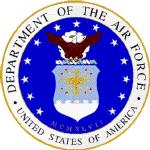
Albert Grenier was the fourth son of Adonais and Noella Despres Grenier's six children. He joined the Air Force In September 1965. His first station was Lackland AFB in San Antonio, Texas for Basic Training.

LACKLAND AFB
Lackland Air Force Base was established on June 26, 1942, when the War Department separated part of Kelly Field and names it San Antonio Aviation Cadet Center (SAACC) to support the war effort.

Albert's Basic training class Click on all photos to enlarge
From its inception, SAACC witnessed rapid growth and transitioned from a former field training and bombing range through a variety of missions: the hub for flying training, site for the officer training and commissioning orientation, a staging area for all veterans returning from WWII for reassignment or separation, and eventually, established as the basic military training center for officers and enlisted personnel entering the Army Air Forces.
Unfortunately, the acronym SAACC ("sack-c") evolved into the less affectionate name of "sad sack" which underscored the makeshift and haphazard configuration of the base. Coupled with numerous name changes, a significant identity crisis emerged for base personnel.
Fortunately the base's downhill reputation was checked in 1947 when it was renamed Lackland Air Force Base in honor of Brigadier General Frank D. Lackland. Brigadier General Lackland, a former Kelly Field Commander, had originally proposed and campaigned for an aviation and cadet reception center on this site. Honor as the "Gateway to the Air Force" was secured.
Lackland established itself as a cohesive training base and formalized training evolved to support the Air Force Mission: " To Fly, To Fight, To Win." The basic training and commissioning programs inspired Air Force pride. A technical training group was established to oversee the many courses now taught at on base.
The Korean and Vietnam Wars severely tested Lackland's capacity to train new recruits and satisfy mobility demands. Training populations in the 1950s soared to 55,000 with only a maximum capacity of 25,000. Rapidly built wooden structures, built in 1941, to include the "Mobilization Open Bay" (MOB) dormitories, burst at the seams and forced the mass erection of a tent city. Temporary facilities, to include the "I" dormitories, were hastily erected as a quick fix to house the new recruits.Base operating support requirements force reactive planning, which often resulted in inadequate implementation.
During Vietnam, resourceful leaders split training shifts, increased flight sizes, and compressed training from 30 to 24 days to satisfy the urgency for military readiness. Training requirements also expanded to include teaching English to allied military members from foreign countries.
As a result of the contingencies of the 1950s and 60s, construction of permanent facilities, to include the 1,000 person steel and brick Recruit Housing and Training (RH&T) facilities for basic military training, cemented Lackland's training responsibilities.
 Chanute AFB
Chanute AFB
CHANUTE AFB, RANTOUL, IL Albert arrived at Chanute AFB in October 1965 he attend the Air Force's Technical school. He he learned Aircraft maintenance on the B-52 stratofortresses. In 1917 Rantoul, Illinois, was chosen by the U.S. Army Air Service to train pilots for World War I. Over the next 75 years Chanute Field (which later became Chanute Air Force Base) became the premier technical training school for the USAAF and USAF. At the time of its closure in 1993 Chanute had trained over 2 million men and women and was the third oldest active base in the U.S. Air Force. Albert remained at Chanute until March of 1966 when he transferred to his next assignment the 436th Military Airlift Wingat Dover AFB, Dover, DE.

Albert at Chanute in January 1966
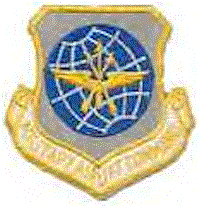
MILITARY AIRLIFT COMMAND, DOVER AFB, DOVER, DE
Uncle Albert was assigned to the 436th Military Airlift Wing, of the Military Airlift Command(MAC) at Dover AFB in Dover Delaware in March of 1966. This was his first assignment as a maintenance technician. Here he worked in the Aero Repair shop, repairing landing gears, flight controls, and cargo doors on the Wing's C124, C133, and C141 Aircraft.

436th MAW
The 436th Airlift Wing is descended from the 436th Troop Carrier Group of World War II fame. Activated on April 1st, 1943, the unit flew the C-47 Skytrain or "Gooney Bird" and was sent to 9th Air Force at RAF Bottesford, England, in January 1944. The group earned the Distinguished Unit Citation for its first missions of 6-7 Juneóthe Normandy Invasion. On subsequent missions the 436th dropped troops and supplies and inserted gliders into Southern France and Holland. In March 1945, the unit was a part of the Allied push across the Rhine and into Germanyís heartland. Following the war, the 436th evacuated patients and prisoners of war until it was inactivated in November 1945.
On May 10th, 1949, the 436th Troop Carrier Wing, Medium was established and later activated in the Reserve on June 27th, 1949 at Goodman Air Force Base, KY. From there and eventually Standiford Municipal Airport, Ky., the wing flew C-45ís, C-47ís T-7ís and T-11ís training as a reserve troop carrier wing under supervision of the 2236th Air Force Reserve Training Center until its deactivation April 16th, 1951. Again activated in the Reserve on May 18th, 1955 at New York Naval Air Station, N.Y., the unit resumed its training mission, this time with the 2230th Air Reserve Flying Center flying T-28ís, T-33ís, C-45ís, C-46ís, and C-119ís before its deactivation May 15th 1958. In between the training periods the unit was ordered to active service and inactivated almost immediately, with its personnel serving as fliers for other Air Force units. The Troop Carrier Wing was redesignated the 436th Military Airlift Wing and activated on December 27th, 1965. On January 8th, 1966 it replaced the 1607th Air Transport Wing as the Military Airlift Command host wing at Dover Air Force Base, Del. The wing initially flew C-124, C-133, and C-141 aircraft, but gradually replaced C-124 and C-133 types with C-5ís. The first C-5 Galaxy was assigned to the wing in April 1971. By August 1st, 1973 the wing had become the Air Forceís only all C-5 wing.

C-124 Globemaster
C-124" the Shakemaster"
The C-124 evolved from the earlier Douglas C-74. To facilitate cargo handling, the C-124, or "Old Shakey" as it was affectionately known, featured "clamshell" loading doors and hydraulic ramps in the nose and an elevator under the aft fuselage. It was capable of handling such bulky cargo as tanks, field guns, bull dozers, and trucks. It could also be converted into a transport capable of carrying 200 fully-equipped soldiers in its double-decked cabin or 127 litter patients and their attendants.
The first flight by a C-124 took place on Nov. 27, 1949 and deliveries of C-124As began in May 1950. The USAF bought 448 C-124s before production ended in 1955. These planes performed such missions as airlift support in the Far East and Southeast Asia, resupply missions to Antarctica, refugee evacuation in the Congo and mercy flights to Morocco, Chile and elsewhere throughout the world following floods and other natural disasters. Most C-124s were transferred to the Air Force Reserve and the Air National Guard by 1970 and all were released from active service in mid-1974.
The aircraft on display was assigned to the 165th Tactical Airlift group of the Georgia ANG following its service with the USAF. It was flown to the Museum in Aug. 1975. it is marked as a C-124 assigned to the 909th Military Airlift group making supply runs to Southeast Asia in the late 1960s and early 1970s.

C-133 Cargomaster
C-133"the Weenie Wagon"
Conceived as an air transport for American ICBMs, the C-133 Cargomaster was developed by the Douglas Aircraft Company and first flown on 23 April 1956. It was the second and largest turboprop transport to be accepted by the U.S. Air Force.
The C-133 was designed to meet the requirements for the USAF's Logistic Carrier Support System SS402L. The aircraft differed considerably from the C-74 and C-124 Globemasters that had preceded it. A high-mounted wing, external blister fairings on each side for the landing gear, and rear-loading and side-loading doors ensured that access to, and the volume of, the large cargo compartment were not compromised by these structures. The cargo compartment (90 feet in length and 12 feet high) was pressurized, heated, and ventilated.
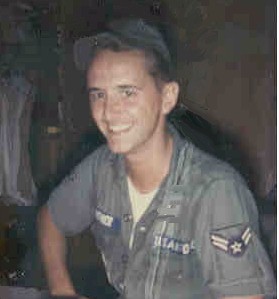
Albert relaxing in the barracks in 1967
The Cargomaster had a 13,000 cubic foot cargo area with floor tie-down facilities permitting installation of 200 airline-type seats. The C-133 could accommodate 110,000 pounds of cargo or a fully-assembled Thor, Jupiter or Atlas ballistic missile. Cargo was loaded via a two-section rear door assembly, the lower section formed a ramp for drive-on/drive-off capability, or by a cargo door on the port side of the forward fuselage. The C-133 was able to accept practically every type of vehicle in service with the U.S. Army.
The Cargomasters went directly into production as C-133A; no prototypes were built. The first C-133As were delivered to the Military Air Transport Service (MATS) in August 1957. A total of 35 were built: the last three having a "clamshell" rear door assembly which increased the compartment length by 3 feet, making it possible to airlift completely assembled Titan missiles. These were followed by 15 C-133B aircraft that retained the "clamshell" doors and incorporated more powerful engines.
In 1958, C-133s began flying MATS air routes throughout the world, and two C-133s established transatlantic speed records for transport aircraft on their first flights to Europe.
The fleet of 50 aircraft proved itself invaluable during the VietNam War, but fatigue problems led to their withdrawal from service in 1971.
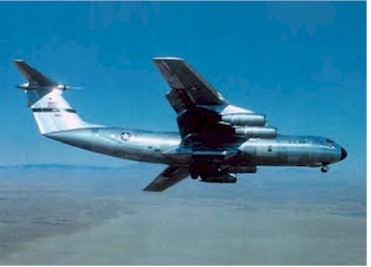
C-141 Starlifter
C-141The C-141 Starlifter was the first pure jet designed for cargo, and it's been a mainstay of U.S. military airlift since 1965. The C-141A Starlifter made its maiden flight on 17 December 1963, the 60th anniversary of the Wright brothers' first flight. The first aircraft was delivered to the USAF, for training purposes, in October 1964. Within one year, Starlifters were making MATS flights almost daily to Southeast Asia, carrying troops, equipment and supplies, and returning patients to U.S. hospitals. It was the first jet-powered transport from which U.S. Army paratroopers jumped, and the first to land in the Antarctic. The last C-141A was delivered in February 1968. The Starlifter, operated by the Military Airlift Command, could airlift combat forces, equipment, and supplies, and deliver them on the ground or by airdrop, using paratroop doors on each side and a rear loading ramp. It could used for low-altitude delivery of paratroops and equipment, and high-altitude delivery of paratroops. It can also airdrop equipment and supplies using a container delivery system. The C-141 was the first aircraft designed to be compatible with the 463L Material Handling System, which permits off-loading 68,000 pounds of cargo, refueling, and reloading a full load, all in less than an hour. A new era in air power history began on 1 June 1992 when the Military Airlift Command and the Strategic Air Command were inactivated and the Air Mobility Command (AMC) formed from elements of these two historic oganizations.
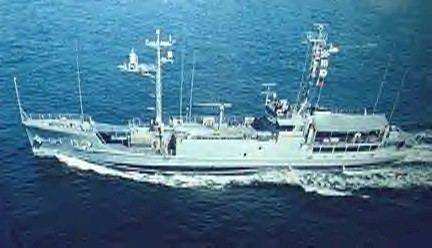
USS Pueblo IncidentTwo cold war incidents would happen in 1968 while Uncle Albert was on Active duty the capyure of the USS Pueblo, and the Soviet Invasion of Czechoslovakia.
The USS PUEBLO, which was captured by the North Koreans in 1968, was the first U.S. Navy ship to be hi-jacked on the high seas by a foreign military force in over 150 years. To date, the capture has resulted in no reprisals against the North Koreans; no military action was taken at the time, or at any later date. This lack of military response guarantees the Puebloís place in history as a watershed event in our national conscience. Click here for more on the "Pueblo Incident"
 Soviet soldiers and tanks in front of the National Museum on Wenceslas Square in Prague were surrounded by Czechoslovaks in 1968.
Soviet soldiers and tanks in front of the National Museum on Wenceslas Square in Prague were surrounded by Czechoslovaks in 1968. click on photo for more on invasion
1968 Czech Uprising and Soviet Invasion
The communist leadership allowed token reforms in the early 1960s, but discontent arose within the ranks of the communist party central committee, stemming from dissatisfaction with the slow pace of the economic reforms, resistance to cultural liberalization, and the desire of the Slovaks within the leadership for greater autonomy for their republic. This discontent expressed itself with the removal of Novotny from party leadership in January 1968 and from the presidency in March. He was replaced as party leader by a Slovak, Alexander Dubcek.
After January 1968, the Dubcek leadership took practical steps toward political, social, and economic reforms. In addition, it called for politico-military changes in the Soviet-dominated Warsaw Pact and Council for Mutual Economic Assistance. The leadership affirmed its loyalty to socialism and the Warsaw Pact but also expressed the desire to improve relations with all countries of the world regardless of their social systems.
A program adopted in April 1968 set guidelines for a modern, humanistic socialist democracy that would guarantee, among other things, freedom of religion, press, assembly, speech, and travel; a program that, in Dubcek's words, would give socialism "a human face." After 20 years of little public participation, the population gradually started to take interest in the government, and Dubcek became a truly popular national figure.
The internal reforms and foreign policy statements of the Dubcek leadership created great concern among some other Warsaw Pact governments. On the night of August 20, 1968, Soviet, Hungarian, Bulgarian, East German, and Polish troops invaded and occupied Czechoslovakia. The Czechoslovak Government immediately declared that the troops had not been invited into the country and that their invasion was a violation of socialist principles, international law, and the UN Charter.
The principal Czechoslovak reformers were forcibly and secretly taken to the Soviet Union. Under obvious Soviet duress, they were compelled to sign a treaty that provided for the "temporary stationing" of an unspecified number of Soviet troops in Czechoslovakia. Dubcek was removed as party First Secretary on April 17, 1969, and replaced by another Slovak, Gustav Husak. Later, Dubcek and many of his allies within the party were stripped of their party positions in a purge that lasted until 1971 and reduced party membership by almost one-third.
GUAM
Uncle Albert's Story would continue as the Cold War became very hot in the jungles of Vietnam. Originally the conflict in Vietnam was just a small containment action of communism in the far east. However it escalated into a bitter war that would divide the United States and forever change the course of the cold war. At the end of 1967 Albert would transfer to Andersen AFB in the tiny U.S. territory of Guam. Guam had a unique history since the beginning of the century, throughout world war two and the cold war. During Vietnam it would become the largest staging area for the mighty B-52 bombers. Bombers that would have a serious effect on the final outcome of the war and Albert was there.
PAGE 2
HOME














